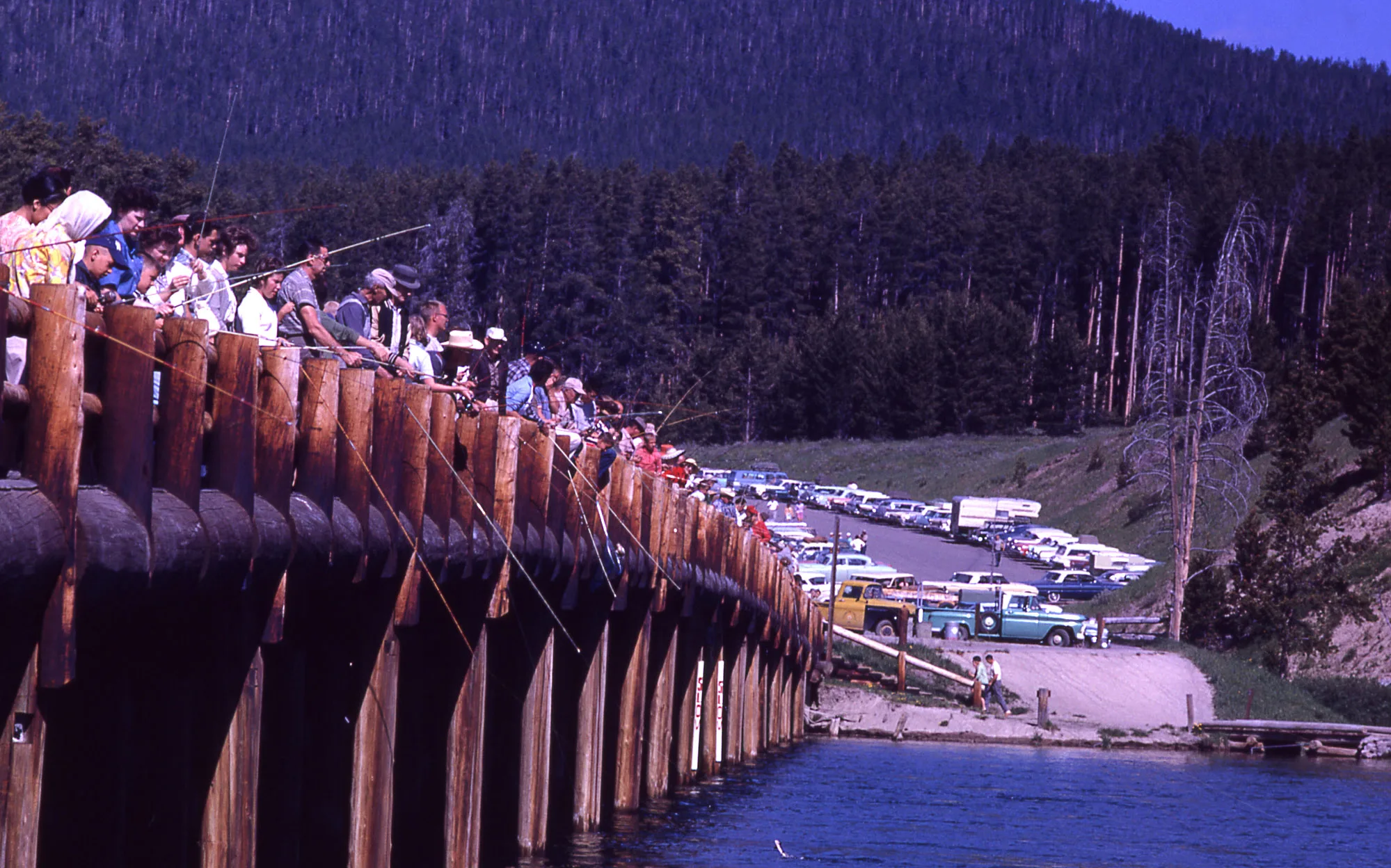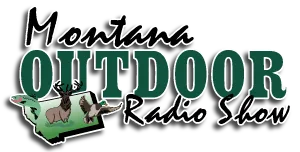Yellowstone Park is an amazing place. It was also once the BEST trout fishing in the world. Anglers from around the world,and especially America, flooded the Park, not to see Old Faithful, but to fish.
My family vacationed in the park each, summer to trout fish.We moved to different campsites every 2 weeks to enjoy every corner of Yellowstone, and its watersheds. The fishing was superb and crowded.
Fishing Bridge was shoulder to shoulder with anglers. They used worms, bait, and whatever they had. You could see thousands of native Cutthroats cruising under the bridge. Just downstream of the bridge was a boat dock where you could rent a motorboat and fish in the lake. The nearby campground was always full as was the huge overflow area.
On the opening day of the Yellowstone River trout season, in July, it would also be shoulder to shoulder. Thousands of anglers hit the water. The limit was three trout per day.
This was when park tourist numbers were relatively smallcompared to the millions that show up today. Less than 60,000 tourists of the monthly millions, even attempt to fish in the Summer today.

Fishing in the park has changed. The geothermal features are more active and have warmed up the waters. Most tourists simply do not fish. There are also few places in the park where you can keep and eat fish.
No more stocking of trout. The park waters were once heavily stocked. You could see thousands of large trout in most watersheds. Keep in mind that over half of the park’s water was devoid of fish, until they were stocked. There were no native fish in these waters. The NPS raised trout within park waters to stock.
Invasive lake trout has destroyed the amazing cutthroat population. Yellowstone Lake will never be the same. Lake trout will always need to be addressed. It costs millions of dollars to control their population.
Killing wild trout to add other trout has ruined severalfisheries. After decades of great wild trout management, the NPS has decided to wipe out these healthy populations and restock them with cutthroat trout. Ironically, watersheds, like the Gibbon River never had cutthroats or any trout until stocked.
Huge floods and weather have flushed out other waters, like the Gardiner River. It will take years for any recovery. This includes the Lamar River and its tributaries. Access has also changed.
Catch and Release fishing has increased fishing mortality. When anglers could keep a limit of three or so fish, they stopped fishing, once they had a limit. Catch and Release anglers never stop. Many caught fish are exhausted and become prey for raptors or other predators. Others die from stress. This has led to smaller and fewer fish.
Pelicans and other predators are feasting on the fish. I remember seeing only a few pelicans back in the 1960-70’s. Usually they were around the Fishing Bridge. Today there are thousands that migrate from California, from as far as the Colorado River to feast on Yellowstone, and Montana trout. Each pelican can eat 6 fish per day. This includes whitefish, suckers, and other fish.
Grizzly Bear populations have exploded. We often sawplenty of black bears in the park, but rarely did we see a Grizzly. These bears are more dangerous, and encounters can be deadly.
Forest Fires have damaged watersheds. Several huge fires have destroyed spawning headwaters. The idea of letting nature take its course was a bad one. It takes a generation for these ecosystems to return to a healthy status.
Camping is not the same in the park. People no longer “Camp.” Glamping is now preferred. HUGE motorhomes, RV’s, and resorts are required. Tent campers are rare. Most of the original campgrounds were designed for one vehicle and tents. Small trailers under 18 feet and pop-up campers were the norm. My family used a 14-foot Winnebagocamper. The night and early morning sounds are filled with noise from generators. Reservations are needed in most campgrounds. Good luck finding a place to camp.
Like it or not, Yellowstone Park is no longer managed for trout fishing. The greater Yellowstone ecosystem management program is more about addressing people than nature. Stay in your cabins, campsites, motorhomes, and vehicles. Pass through, stay on the walkways, and move on. The wildlife exists to entertain viewing spectators. Yellowstone is more like a scenic drive through zoo than a fishing destination.
Times have changed!
Montana Grant



